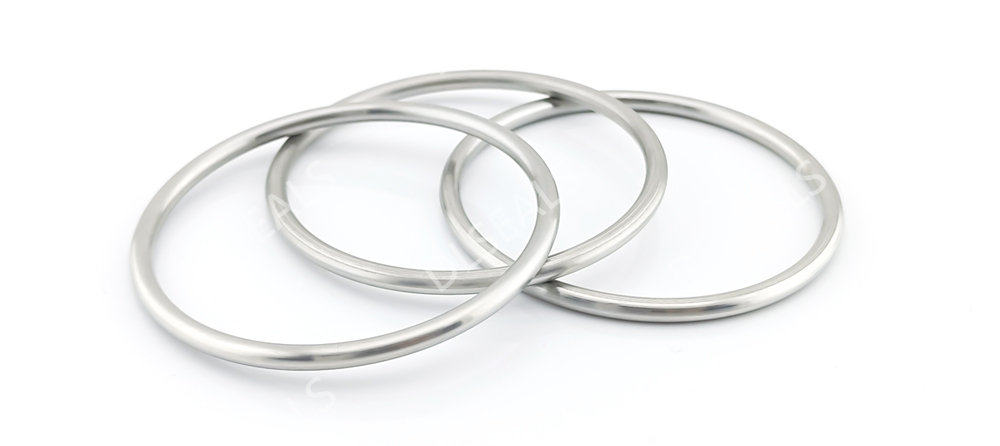
Metal seals play a key role in modern industry. They not only meet the sealing requirements under extreme conditions such as high temperature, high pressure and high corrosion, but also continue to develop and innovate to adapt to new technical challenges. This article will explore the design principles, innovative applications and future development trends of metal seals to help understand their importance in modern industry and future development direction.
1. Design principles of metal seals
The design of metal seals needs to take into account many factors to ensure their performance and reliability in practical applications. The following are some of the main design principles:
Material selection: The material selection of metal seals is crucial. Appropriate metal materials should be selected based on factors such as temperature, pressure, and medium in the use environment. Common materials such as stainless steel, aluminum alloy, copper alloy and titanium alloy have their own advantages and disadvantages and need to be selected according to specific applications.
Sealing geometry: The geometry of the seal will affect the sealing effect. When designing, it is necessary to ensure that the contact surface of the seal and the mating surface can effectively fit to prevent leakage. Common shapes include flat seals, U-shaped seals and V-shaped seals.
Stress distribution: Metal seals are subject to various stresses during the sealing process. When designing, it is necessary to consider how to evenly distribute these stresses to avoid local overload and seal failure.
Processing accuracy: High-precision processing can ensure good fit between the seal ring and the contact surface and reduce the risk of leakage. Therefore, the processing accuracy and surface finish must be strictly controlled during the manufacturing process.
Durability and life: Metal seals should have sufficient durability to maintain stable sealing performance within the expected service life. The fatigue strength and aging characteristics of the material must be considered during design.
2. Innovative applications of metal seals
With the advancement of technology, the application areas of metal seals are constantly expanding, and many innovative applications have emerged:
Aerospace: In the aerospace field, metal seals are used in high temperature and high pressure environments such as aircraft engines, fuel systems and hydraulic systems. New high-strength alloy materials and optimized designs improve the durability and performance of seals.
Oil and gas extraction: In the process of oil and gas extraction, metal seals are used in wellhead equipment and drilling equipment. With the development of deep-sea and high-pressure extraction technology, higher requirements are placed on the high pressure resistance and corrosion resistance of seals, prompting continuous innovation in metal seal materials and designs.
New energy industry: In the new energy industry, especially in electric vehicles and fuel cells, metal seals are used to seal battery packs and fuel cells. New materials and technologies enable metal seals to work effectively in high voltage and high temperature environments.
High-tech manufacturing: In semiconductor manufacturing and high-precision equipment, metal seals are used in vacuum and clean environments, requiring high-precision processing and excellent sealing performance. New ultra-precision processing technology and material research and development have improved the applicability and reliability of seals.
3. Future development trends of metal seals
The technology and application of metal seals are constantly evolving, and the following development trends may appear in the future:
Application of high-performance materials: In the future, more high-performance alloys and composite materials will be applied to metal seals to improve their performance in extreme environments, such as high-temperature alloys and nanomaterials.
Introduction of intelligent technology: With the development of intelligent manufacturing and sensing technology, metal seals may integrate sensors and monitoring functions to achieve real-time monitoring and fault warning, and improve the safety and maintenance efficiency of equipment.
Environmentally friendly materials: The improvement of environmental protection requirements will promote the use of more recyclable and environmentally friendly materials to reduce the environmental impact during production and use.
Advances in precision machining technology: With the development of advanced machining technologies such as laser machining and additive manufacturing (3D printing), the machining accuracy and complexity of metal seals will be further improved to meet more demanding sealing applications.
Customized design: In order to meet the special needs of different industrial fields, customized design of metal seals will become more common in the future to improve their adaptability and performance in specific applications.
IV. Summary
As a key sealing component in modern industry, the design, materials and applications of metal seals are constantly innovating and developing. By optimizing the design and introducing new materials and technologies, metal seals can meet increasingly demanding use requirements and promote the performance improvement and safety assurance of industrial equipment. Looking to the future, metal seals will play an important role in a wider range of fields and more extreme environments, helping the development and progress of industrial technology.
Post time: Sep-02-2024
